|
|
Personal Projects
|
|
|
Would you like to see through walls? You’ve likely encountered a video game that allowed you to do just that. Whether it's called Eagle Vision, Detective Vision, or Spectral Vision in different games, these are known as Vision Modes. X-Ray Vision, illuminating hidden clues, or identifying friends from foe; Vision Modes can serve a variety of functions. Yet, what visual strategies do developers employ for their different vision modes? In today’s post, I'll delve deeper into the visual strategies behind Vision Modes.
Generally speaking, there isn’t a wide variety of strategies used between these games. Some games attempted to alter the palette of the game, while vignetting is often used to focus the vision. Additionally, a variety of saturated/glowy highlights are often employed for important objects or characters, and in most cases, players are allowed to see through walls. Altered PalettesAltered palettes refer to changing the overall visual treatment of the in-game environment. This can occur in various ways. For instance, Assassin’s Creed’s Eagle Vision features a fully desaturated environment, where all colors are removed except for highlighted objects. Similarly, Far Cry’s Hunter Vision also utilizes desaturated environments, likely due to both games being developed by Ubisoft. In contrast, Batman Arkham’s Detective Vision and Dishonored’s Dark Vision take a slightly different approach, opting for a monochromatic look. Detective Vision employs shades of blue, while Dark Vision applies a sepia-toned filter, both intended to tone down the environment and highlight important elements. Watch Dogs’ Nethack follows a similar monotone approach as Detective Vision, but with all textures removed and a grain filter applied across the screen. The strategy behind altering the visuals around the player, aims to minimize visual noise and focus players on key elements. However, it’s important to note that not all vision modes alter the game environment's palette. Ghostwire: Tokyo’s Spectral Vision, Horizon Zero Dawn’s Focus, and The Witcher 3’s Witcher Sense leave the surrounding environment unchanged. Vignetting
However, The Witcher 3’s Witcher Sense deviates from this trend by maintaining the surrounding visual palette while still incorporating a vignette. In this instance, the vignetting serves the additional purpose of informing the player that the vision mode is active. It can be inferred that this strategy is utilized to eliminate peripheral distractions and focus the player’s attention toward the center of the screen. Glow Highlights
Batman Arkham’s Detective Vision adopts an x-ray mode, highlighting characters' bones through walls, while also employing solid model glows for objects, similar to Dishonored’s Dark Vision. Ghostwire: Tokyo’s Spectral Vision exclusively features model silhouettes as glows, resembling Witcher Sense but with less haze. Additionally, some games utilize a particle haze trail for players to follow, often representing a scent trail. Witcher Sense, Hunter Vision, and Detective Vision are among those employing this method. Key DifferentiatorWith the majority of these games employing similar strategies, the key differentiator seems to be whether a game completely alters the environment’s palette or not, through desaturation, applying filters, or making the environment monotone. Each strategy has its pros and cons depending on the player. For some players with certain visual impairments, having their entire screen altered may be jarring, while for others, it could enhance contrast and aid in overall screen cognition. There is no clear winner here; it ultimately depends on the intended player experience. However, it is crucial for the play environment to remain clearly readable, unless, of course, it is intended to be a particularly disorienting moment for the player, such as one of Far Cry’s drug-induced cut scenes.
If you’ve made it thus far, thanks for reading! I hope it was at least somewhat interesting, and hopefully you can use some of these strategies on your next project.
0 Comments
Hey everyone! Today’s post is going to be a bit different, I’ve recently purchased my first 3D printer and have been running it through it’s ropes on quite a few projects. While I’m still a beginner, there’s a lot I learned in a short amount of time… that I wish I had known earlier! So today I’d like to share some of the tips and tricks I’ve learned, while 3D printing for the first time. Getting StartedTo start with, I’m using an Ender 3 printer. It’s fairly compact size, but big enough to still do fairly large prints (220 x 220 x 250 mm). At it’s approachable cost point, and ease of assembly… I would definitely recommend the Ender 3 as a starter printer. During assembly, I’d say probably one of the most important elements to look out for are the sensors for the X and Z axis, these help the machine understand and recalibrate it’s XYZ axis. Keep a close eye on how these attach, a slightly misaligned Z sensor will have your extruder trying to print under your printable area… vs ontop. Also keep an eye out for the power supply toggle switch in the back, if it’s set on the wrong voltage for your outlet, the machine won’t turn on. Honestly assembly was a breeze, and the Creality website has many video tutorials on assembly. When selecting a filament to work with, I’ve been working with PLA. From what I’ve read, it seems to be valued for it’s ease of printing. ABS is a strong material, but PLA typically runs into less issues. I was doing a lot of research at one point on potential concerns, printing in the cold, etc and each time PLA seemed to be fine. I would say the one mistake I made here was that I ordered the assorted pack of filament from Crealty, not really realizing it’s not much of a deal. You get five 200 gram rolls of various filament colors, but 200g is really not a lot… and I had many more issues with my prints until I moved onto a new roll. It may be because these are cheaper filaments used in the variety pack… I’m not sure, but I will say the filament is printing much nicer from a new 1k gram roll for the same price. The standard 1.75 mm black PLA from the Creailty website works very well. Before moving on, I have done some research in other filament types and it’s a wild world out there… There are various metal filaments, and I attempted to use a wooden filament, but my knowledge here is extremely limited. I had issues with the wooden filament gunking up the extruder, not printing well, and it’s a fire hazard… I wouldn’t recommend experimenting with filaments until you’re more comfortable. After installing your filament and turning on your 3D printer for the first time, I’d suggest looking at a few things. Within the machine menu, going to prepare and selecting auto home, and watch where the extruder head ends up. Is it below the build plate, above? The next step is crucial, you need to start leveling the head of your extruder, to the build plate. They suggest using a piece of paper between the extruder head and the build plate, to gauge distance, but you can eyeball it pretty easily. There are four easily adjustable knobs on each corner, to ensure that everything is leveled. I usually turn the machine off, and so I can manually move the extruder around on the board to make sure the connection is good. Once satisfied, I would auto home once again, and within the control menu, play around with the positions of your extruder to head to confirm your bed is leveled. I have heard that the springs are notoriously loose on the Ender 3, and I saw a suggestion to get stronger springs to hold the level better… I may do this at some point, but I honestly just regularly check the bed level to make sure it’s fine. There is also an auto leveling perpetual on the Creality website, I haven’t used it yet but I can certainly see how that would help. With the printer assembled, filament installed, and print bed leveled, you’re ready to start printing! Just have to select a file. Finding a ModelWhen looking for models to print online, there are a lot of options. To start I’d recommend browsing thingverse.com, they have a wide variety of free to use models and I would just keep an eye on the number of “makes” a file has. If it has many people making it, I would assume the files are pretty good to print. If you’re unsure, you can always use other sources like etsy to purchase a model, these may be more reliable since you’re actually paying for them. As far as legality on if you can resell printed models, that’s typically between you and the artist… best bet is to ask. Once you have your files, they’ll typically be in a zip folder of STL or perhaps OBJ files. These should all load within the Creality Slicer that came with your Ender 3. Creality Slicer Settings and adjustmentsBefore jumping into the Creality Slicer, I’ll just say that this is my only baseline of knowledge and can see there’s a lot of other softwares out there. Many people seem to vouch for Cura, but I’ve also seen people frustrated as they were printing fine with the Creality Slicer… and have issues with the settings to get Cura going. Regardless I would suggest starting with the given software, and evolve as you go. With your downloaded model, go ahead and load this into the Creality Slicer. It should appear as a 3D object within your printable area. If it’s too large, you should play with the scale options, by selecting the “plus sign” it will auto size to max print area…. Keep in mind that’s fairly large and you may not want that on the first print. On your initial print, I would keep to the basic settings here. Normal or fast should be more than adequate for a simple print, but if you’re looking to try higher quality first you can select that option yet it does increase the time significantly. Depending on the complexity of your model, you may need “Supports.” Essentially if your model has overhanging edges that are 60* or more, you’re likely going to want to select supports. What this will do is print extra material like scaffolding that will help everything print nicely. If you were to go into the full settings mode, you’ll see more options for supports. I recommend sticking to “grid” vs “lines”, I’ve had the best luck with it, and you can either have touching “build plate” or “everywhere.” If you’re printing a character, you may want to consider everywhere so it’ll help support the most detail… BUT you may have to trim more little pieces off in the end product. Fill amount is typically good at 15%, but I have noticed on some small models that’s pretty strong… you may want to consider going lower, depending on how delicate it needs to be. I also always print on a “raft” platform, again just seems to work well. Now, those are really all the basic settings you need to understand before doing a basic print. There’s a ton of other stuff that I’ve only begun to experiment with, for example you may want to play with the “fill density” of your object in the advanced settings, if you don’t need it to be quite so thick with material. This will help you print faster and use less. You could also modify the support angle on your grid, within the advanced menu, if you wanted to be very precise on where exactly supports go. Yet, you likely don’t need to mess too much with these settings when you’re starting off. One final recommendation I may have here, is to always double check your model by changing the view mode to layers before saving the file. This will allow you to see exactly what gets printed, sometimes your build platform will be outside the print area and you may not see it until you check the layers. Next all you need to do is to save your gcode file, onto the micro SD card that it came with. Another note, try not to put your files in subfolders… I had been doing this and encountered an unfortunate bug where pausing and resuming a print has issues if your file isn’t in the root. I figure it’s best to be safe and leave it at the root. Print!Okay so you’ve got your model loaded up on the SD card, it’s back in your printer and it’s powered on. Now, typically a print will auto home itself and get ready on it’s own settings… BUT if you’re anything like me and want to make double sure, you’ll want to do that now. In the prepare menu, be sure to “auto home”, look and make sure your bed is leveled, and you should be good to go. Navigate to print, and you should be on your way. Problem : Warping or Bed AdhesionNow from here, things should go smoothly and the printer will auto print the model on it’s own. Yet there have been a few issues I’ve run into that I’d like to share, as well as the solutions I’ve found. My initial biggest problem was the platform of my 3D object not always staying stuck to the build plate, this can cause warping, misalignment, and an unstable print. I only later found out about “3D Print Adhesives,” they can be found on Amazon and I purchased one called “bed weld.” The way these work, is that you apply a layer of this adhesive to the build plate before getting started. Then as your build plate heats to 60* C, it bakes on and is ready to print. I would totally recommend looking into something like this to get you started. That said, I continued to have issues on some of the larger prints I started doing. If you’re doing prints that are 40+ hours, I’m not convinced this adhesive is strong enough to last… in these instances, I’ve found that it’s actually really easy and worthwhile to run a bead of hot glue around your build platform as it’s building. I know it sounds pretty scary, and the build platform is pretty hot, but at 60*c it seems to still cool and harden the hot glue. I’ve had no issues getting hot glue off the build plate later, and if you do… you can use your printer to heat the plate and it should come right off. While it’s not horribly aesthetic, I really believe in the hot glue method for longer prints, to ensure bed adhesion. I would also just say, to be careful about letting your build plate cool and heat too often… that seems to really cause instability in the adhesion. There was one instance where my model became detached from the build plate, and I was able to line it back up and hot glue it.. And managed to get the print to continue successfully. NOT something I’d recommend, but if you're desperate after a long print, like I was, it worked. Also I have had the recommendation to get a glass build plate, this would help with bed adhesion, heat, etc. Problem : Pausing and Resuming PrintsIt’s possible to pause and resume your prints using the onboard Ender menu, but it’s very finicky and I honestly wouldn’t recommend it. The issue I typically run into, is when you use the onboard “resume” function, it will move the extruder head linearly into position to resume… which could mean dragging the extruder tip through already printed material… it makes a mess. After learning a method on how to repair a gcode file, I tend to go back to this method to resume my prints. Gcode : Print from specific layerThis method works well if you need to resume your print from a specific layer because you’ve run out of filament, there was an issue in printing, etc. Your best bet is to note the Z height of the extruder (if it’s at the right height). If it’s way above the layer you’d like to start printing on, I’d go ahead and first auto home (you wouldn’t believe of often ender 3 forgets where it’s height is). From here, I’d use the controls on the Ender 3 menu to move your extruder head to be right above the last finished layer. Using the right settings should allow you to get right up to the appropriate height (without crushing your model.. Be careful). Note the Z height of your extruder head, it should appear on the screen. With this in hand, hop over to your computer and open the gcode file up in your favorite text editor. I recommend notepad++ if you have it, but notepad works fine. Now what you’re going to want to do is to search (cntrl + f) the z height of your layer. This should allow you to navigate to the layer in question and determine if you want to go down a layer or above… use your best judgement. From here, you want to select everything above that layer, all the way into the intro text, and delete. I first made the mistake of removing some of that intro text, but this is very important for getting your print initialized. The only setting I suggest removing is : G28 Z0 ;move Z to min endstops This is because I like to manually set the Z before getting started, this way I don’t have to worry about the extruder head being dragged across my model. So once your file is ready, you’ve deleted all the previous layers (until the intro text) and you’ve saved this file back out to your SD card and inserted back into the printer. This time, when you get started on your print, make sure to auto home but after use the control to move the Z back up to higher than your print area. I suggest this so the extruder will move downward into position, and is less likely to destroy your work. Hitting print on this file, and you should be good to go to resume your print. I’ve used this to recover from a few printing mistakes, and now really enjoy getting into the gcode file. (This is another references to the same method) Filament Grinding Filament grinding is another issue I’ve run into, what this looks like is your filament stops printing and if you look closely… the little gear used to extrude material will have worn away a smooth zone on the filament and it is no longer feeding it into the tube. You’ll need to pause your print, and pull the filament out if you can. I tend to just clip a little bit of material off the end, just enough so I can feed enough to get past the grounded spot. Then re-feed your filament back into the machine, and it should be good to go. I haven’t had issues with the extruder head becoming clogged but I know that it’s an issue. I’ve found to compensate for filament grinding you should consider increasing the heat of your extruder tip, this way the filament can more easily flow out. I suggest going up 10*C or so, and you can also consider slowing down your print. If you’re doing a fast print, this could cause some filament grinding. Finally, it also comes down to the quality of your filament. I had a beginner roll that just never really wanted to feed well, so keep that in mind. Finishing the PrintHopefully you won’t run into these issues above, but if you do that should help! At the end of the print you’ll have your new model waiting for you on the build plate. Now initially when I was using the basic filament, I had a lot of issues removing the printed platform from both the build plate but also the model itself. I had resorted to cutting material off at times, and only later realized that it should actually peel off quite nicely. While some resistance is expected, if things are printing properly you should be able to remove the bottom raft by hand. Once your model is removed from the build plate, be sure to wash and clean it off. Under running water with soap is fine for the build plate, it’s essential to get this cleaned off and ready for your next print. From here you’re free to sand, paint and finish your printed object. I believe that covers all of my initial lessons learned… I’m sure there are things I’m missing here but hopefully this is helpful to some of you looking to get started, and are running into some of the beginning issues I was. My final words of wisdom would be to not let any of this intimidate you, you’ll have good prints and failed prints. I’m reminded of my Tech Ed teacher from Middleschool who always said “The quality of a Carpenter isn’t gauged by the number of mistakes they make, but by how noticeable they are in the end.” This has been my mantra as I stumble my way through this new world of 3D printing, but I find it fits well.
Hope this was helpful in your 3D printing adventures! In the absence of face to face meetings, it's difficult for a leader to build community with a remote team. Below, I go into a few of my thoughts and strategies on how I'm managing two very different departments remotely. Thanks Colorado Biz for the Publish!
Check out "How to build community with employees while working from home" “Gamification” is a term that has been popularized by the modern cultural and consumer demand of video games. It is the application of design elements (e.g. leaderboards, scoring, points) to an activity or set of activities, made popular by video games. Today, it has made its way into software programs as a way to increase engagement and productivity. Yet when we think about gamification today, we don’t generally think of its application in educational settings, let alone in the business world. After all, when was the last time Ubisoft had a press conference about how gamified Assassin’s Creed is? So what are we talking about? We’re talking about the challenge of engaging adults in professional training and development while being sensitive to their learning preferences. The reality is, it’s hard to get adult learners excited to go back to the classroom to learn something for their job. But there exists a potential for gamification to lower the barriers to learning for adults. Today’s professionals are a prime target for using gamification in a more meaningful way—to break through the “sheer fun and games” if you will, and leverage gamified elements for a greater, more significant purpose. Gamification is really all about education, and it’s alleviating the age-old struggle of how to teach effectively and remain relevant. Figure 1 Before breaking down the benefits of gamification in learning, let’s review more common learning approaches. Less thrilling “cousins” of gamification often used in teaching and tasked-based activities include displays like tutorials, lectures, slide shows, watch-only videos, and text-based material. These are used in educational settings and are part of what researchers define as “passive learning,” techniques—a method of teaching where students receive information from a source to internalize and regurgitate. Studies show this approach is highly ineffective at helping learners retain information (and even worse when it comes to applying learned information to an actual experience or task). Gamification can help overcome these challenges—especially when we leverage it within the context of business training and professional employee development. The types of training professionals might undergo include trainings on customer engagement and retention, sales processes, use of specific software applications, etc. If professionals can conduct those trainings in gamified settings, their propensity for completing (and enjoying!) training increases. We’ll discuss “how” this actually happens later. As a result, they might be better collaborators among colleagues, drive more sales, or foster greater customer satisfaction. Entertainment with Social BenefitWe’re constantly on the hunt for the “perfect” way to teach, one that resonates and is impactful. The difficulty here is that people are unique, each with their own motivations, modes of learning, and literally the way our brains are wired to absorb information. Gamification isn’t the first attempt at a perfect solution, television and radio had their time as well. Before we dive deeper into how gamification enables professional, adult learning, let’s understand how history has taught communities. Before video games entered the market in a big way, TV and radio held the spotlight as primary modes by which information was relayed and stories were told. What you might not know is that the channel’s reputation to deliver information to the masses (eventually ‘to entertain’ the masses) was actually grounded in socio-psychological theory. Miguel Sabido aptly named the “Sabido methodology” to define ways in which social attitudes and behaviors were positively changed due to information (aka: a stimulus) delivered from television and radio. Sabido pioneered the use of telenovelas to teach about social issues in the 1970s and 80s, when he was Vice President of Research at the Mexican television network Televisa. His complex narratives allowed audiences to relate to his characters who were often positioned as positive, negative, and neutral role models. The characters addressed relevant social issues of the times (e.g. women’s status, child slavery, environmental protection, HIV/AIDS) and audiences became emotionally attached to them as they made good or bad decisions within the storyline. Why? Because the topics covered and the character behaviors resonated with viewers. What Sabido uncovered in this narrative communication method (complete with relatable characters and compelling storyline) was a new way to teach people about important issues they otherwise might not care to educate themselves on. Over the next decade, Sabido produced six serial dramas that touched on issues of HIV/AIDS and safe sex practices—coincidentally (or not), Mexico experienced a 34% decline in population growth rate during that same time frame. Perhaps the way in which he addressed social issues that were important to his viewers, resonated after all. We can learn a lot from Sabido’s efforts here. According to Population Media, “The major tenet of the Sabido methodology is that education can be compelling and that entertainment can be educational. Sabido originally termed his approach ‘entertainment with proven social benefit,’ and since then, many communication professionals and scholars have applied the term ‘entertainment-education’ to the Sabido approach.” Sabido helped pioneer a new kind of learning that adults were attracted to and interestingly enough, we see similar “entertaining education” strides made today when teaching is done using gamification. Learning styles, information overload, and the misconceptions of GamificationIt’s not shocking that the interactive media and gaming industry has followed this “entertainment-education” pathway. As technology evolves, we naturally find new ways of putting it to work for us in a way that is not only useful and functional but appealing. Sabido’s use of serialized dramas and engaging characters have shown to be extremely effective in igniting social change and shifting social attitudes among viewers/consumers of information—and as professionals in business, we should learn from his work and mission. Consider gamification the latest teaching approach we have at our fingertips. It offers a new way of learning that hasn’t been employed to its fullest potential in other media/education models. There are three generally recognized learning styles: Visual, Auditory, and Kinesthetic. Kinesthetic learning (learning by doing), wasn’t really an option for Sabido (watching TV was passive information consumption, visual and auditory). However, gamification and interactive media is a reflection of that third learning category, kinesthetic. For the first time, we can take a student to Mars in a virtual environment, or have them interact with a neuron the size of a house leveraging Kinesthetic learning technology. The training and educational possibilities are endless (especially when we layer in elements of gamification) and we’re just scratching the surface. But learning is only as effective as the approach we deploy to learn. When it comes to assessing the effectiveness of gamification in an educational application, learners tend to evaluate it from two lenses, asking: “How do I learn” and “How do I play?” To answer these questions, we can review various game mechanics and features that make up each of the three learning styles. More on that later. However, we’re missing a large piece of the purpose of gamification if we don’t also ask “Why do I play?” This is equally the most challenging question to answer when it comes to using gamification to teach today’s professionals. If we are to truly leverage gamification as a learning mechanism for business in professional training and development, we first need to understand how adults process new information. Researchers note “…our problem as adults are that we want to take new knowledge and compare and contrast it to what we already have. Our brains natively know that they can only process so much at a time, so they try to analyze incoming input to identify key material that must be retained, and then immediately file that information alongside relevant contexts. That processing imposes a significant amount of overhead, and it’s why acquiring new knowledge and skills is so much harder for an adult.” Compare that learning style against the physical act of teaching a child, and we see stark differences. When teaching a child a concept, it is relatively straightforward: preach at them, and they’ll absorb it. For the most part, author Don Jones notes, “they’ll believe it because they tend to lack the context to dispute it.” Now apply how adults learn to their professional and personal environments. As adults, we’re constantly bombarded, now more than ever, with new information at every moment. Opening up your phone in the morning usually bears forth a host of notifications to sift through, between messages, news headlines, and advertisements. Our brains are constantly working to filter what we care about, and what we don’t. Adults do this natively and unintentionally, as much as we’d like to just absorb all the information we’re presented with… our brains just don’t function that way anymore. We’d be on overload! Should businesses adopt gamification as a learning strategy to enable professionals in their day-to-day jobs, we must first be cognizant of their perception of “playing a game,” (especially now that we understand how they learn and filter information). Imagine an adult that’s being asked to learn something new on the job by using a gamified platform where they have to play a “video game” to do it. That adult learner may very well bemoan the thought of “going back to school” or “playing a game” to learn something about their job. Unfortunately, video games aren’t something adults take seriously (because up until recently, they haven’t been really applied to support business-like functions and serve a greater good). There’s a perception that playing games is all fun and not meaningful–but gamification has to overcome these misconceptions. When teaching adults, we must remember to communicate the “why”… Jones also notes, “I often provide the ‘why do I care about this?’ answer upfront, in the form of a problem statement, where my key point becomes the solution. I then immediately illustrate or demonstrate how the key point solves the problem, providing reinforcement and confirmation to the students’ brains.” Leaders interested in deploying gamified learning in professional training programs need to communicate the “Why do I play?” to their trainees. The answer isn’t merely to ensure the learner understands the point of the lesson, it’s much more about understanding what drives and engages their brain to interact with a gamified environment in the first place. There are driving motivational factors in gamification that make it a powerful tool for professional training and learning. Given that we all are wired differently, we must understand how to make gamification work best for us, as individual learners. Making gamification work for all learnersYu-kai Chou created a framework for gamification and behavioral analysis that he calls “The Octalysis Gamification Framework.” Within he does a fantastic job breaking down driving factors and motivators for different types of gamers and learners—and we can use this model as a foundation to build out professional learning programs and activities in our own businesses. The Octalysis Framework is extremely deep, yet it’s easier to understand Chou’s eight Core Drivers in human behavior, in the circular graph. When we consider Chou’s driving factors, through the lens of “How we Learn” and “How we Play,” in-game mechanics—with the understanding of the three learning styles, it becomes easier to see the potential for gamification as a mechanism to complement other learning styles. By examining the motivating factors that contribute to whether or not something is considered “gamified,” those doing the teaching can clearly see where kinesthetic learning fits within the overall game mechanics structure in relation to auditory/visual representations found in the mechanics. Figure 2 Notice in figure 2, game mechanics prioritize competitive drivers over collaborative efforts, community over exploration (as indicated by the quantity of learning style icons).
As much as we celebrate the experiential elements of kinesthetic learning in educational literature… there’s much work to be done in gamification to ensure hands-on learning styles are better represented on this model so that more inclusive learning can be had. Further, game components like “Levels” and “Missions” are incredibly broad terms and they can be as varied as the subjects they attempt to illustrate, yet I would argue that these mechanics determine if a product truly feels like a game more than features like the ability to share accomplishments socially or obtaining a badge. The reality is, we’ve had a much longer history teaching to auditory and visual learning pillars, more so than teaching and training staff with gamification. If anything, this may illustrate that it’s easier to develop products and software that align with the visual and auditory-based learners versus developing products to meet the needs of those who want more hands-on experiences in a game-like setting. This is why we mostly hear about digital badging, leaderboards, and “leveling up” in the context of video games instead of in training programs for business professionals. While incorporating gamification elements into a professional development training program can be done, do we need to check off all these game mechanic boxes in order for a product to be considered “Gamified?” Arguably no. It’s all about your demographics and what will drive them to learn most effectively. We have reflected upon the history of “engaging educational learning” in the context of telenovela programming, deepened our understanding how we process and retain learned material in an overly interconnected culture, and sought new ways for learning to “stick,” one thing becomes clear: gamification is an untapped learning resource for today’s professionals. Dare I say, the diamond in the rough we’ve been searching for in business training and professional development. If your professional demographic is at all varied (I bet it is), then your teaching strategies will likely have to be as well. It’s time businesses think beyond the passive learning styles of yesteryear, and embrace a new gamified approach to adult training and development—something that better fosters driving factors like collaboration and exploration equally to that of competition, community, and achievement. Only then, will we really have a learning approach that meets everyone where they are. ***this was also published on boss magazine here*** When I finished College, I really thought I had it all figured out. Having taken copious leadership courses outside of my normal degree workload, I was certain that I was well equipped to enter the job market and seek out a leadership position. Having now gone from intern to VP, I realize there was much I didn’t know and continue to learn each day. While College had established truly valuable fundamentals, there was still so much I wasn’t really prepared for. Today’s post is going to be a bit different, as I’d like to talk a little bit about my takeaways from being a leader at two vastly different companies thus far… and what I wish I had known earlier on. 1. Being a “Jack of all trades” doesn’t make you a good leader.This was probably one of my earliest lessons I learned when I became Lead Artist. Early in my career I prided myself in taking on new challenges, new forms of art, and being able to be agile with my workload. That said, it’s a challenge to transition from that mindset in a healthy way once you’re a leader. Once I had my own team, I was often quick to still take on a lot of the artistic responsibilities on projects. I would see my artist being slower than me on a task, and it was hard to not take it away and fix it quickly myself. While in some instances this works, in the long run you’re really not guiding or developing your team. Without given opportunities to try, you effectively start to stagnate your employees and it shows a lack of trust. Effectively one of the hardest things to do, is to learn how to let go once you’re a leader. You have to realize that you were given opportunities to succeed or fail, and you need to provide the same opportunities to your employees. Finding areas of safe failure, is both a challenge and a responsibility as a leader. By safe failure I mean you need to provide opportunities where if someone fails it doesn’t implode the project you're working on and you can help build new skills in a safe environment. That said, this doesn’t imply that you shouldn't be in the trenches with your people… in fact I find it to be incredibly valuable for you and them if you are. 2. Everyone communicates and learns differently.We all learn about personality types and Myers Briggs in school, but until you’re truly put in a position where you have to educate and communicate with vastly different personalities… this is where it becomes painfully obvious that you have to shift tactics depending on the individual. To that end, setting up personal time to get to know each and everyone on your team is incredibly important. At times this can be easy in an office environment, you invite a coworker to coffee and you can chat about work or life. Yet if you switch to remote work, it’s much more difficult to simulate those casual water cooler type meetups. Setting up one on one calls, and providing a space that isn’t intimidating and centered around the employee is crucial. For some, it can be intimidating to “talk to the boss” yet it’s up to you to help alleviate that fear. Personally I use humor in an effort to remove tension, but leaders should lean into their strengths. In today’s world, there’s a lot that can get complicated. Mental illness, depression, and burnout are all relevant fears in today’s working environment. Getting to know your employees builds trust and helps you see problems before they start. There are also those who may leverage mental illness as a shield to protect poor work ethic… which is both extremely hard to identify and a sensitive issue. I have experienced both worlds where people are genuinely struggling, and others who have fabricated some pretty tall tales to avoid work. This is why it’s so important to understand those who work for you, not only to help grow and evolve their careers, but also to spot issues before they start. 3. Sometimes the hardest thing to do, is to recognize that there are no villains.Objectively while working, it’s highly likely you’ll run across a co-worker that may seem villainous. They could be aggressive and hostile, passive aggressive, condescending in emails, or just plain disrespectful. It may seem like they are out to get you, yet I’ve found that’s rarely the case. What is highly likely, is that they are under pressures unknown to you and are managing it poorly. As much as we don't like to admit, we’re creatures of emotion and many struggle to manage their emotions in productive ways. It’s equally difficult when presented with unprofessional behavior, to not respond in kind or to recognize that it could be coming from external pressures the other person is experiencing… and they aren’t just “evil.” Although there are a couple caveats to this discussion… Toxic people do exist We often throw around the term “toxic” in today’s media, yet “toxic” is extremely hard to define in my opinion. Although I found this article on “The Greatist” that best aligns to my experiences with toxic personalities: “One way to tell you have a toxic person in your life: Every time you encounter or hang out with them, you feel exhausted, emotionally drained, and negative. There’s always something with this person.” I find the toxic people in my life are often dealing with their own forms of depression or mental illness and have a hard time with their own sense of self… and often manipulate others to help fill the void in their own self esteem. In this Greatist Article, Irwin goes on to say : “You know you are being manipulated when you begin doing, saying, or believing things that are serving them, as opposed to you. Healthy people encourage and empower you to be your best. Manipulators tell people that they know what’s best for you.” I would highly encourage that you check out this article to learn more on toxicity, it’s rare but does exist and can easily ensnare you if you’re not careful. With egos, sometimes there’s no “winning” Some people are purely ego driven and are blinded by it. In these instances, I find it’s hard to get to a logical point in the discussion and it often feels like an argument for argument’s sake. For these types of personalities, you really have to know what hill to die on and understand that you’re going to have to make a concession somewhere in order to further the dialogue. Not that you need to actively stroke the other person’s ego, but letting them feel as though they have a win in the discussion (as painful as that can be) is typically the easiest path to a resolution. It’s not fun, but it becomes a form of negotiation where hopefully the conversation will land in a place that’s fruitful. Caveats aside, the sooner you recognize the other person as a person (flawed or not) instead of a villain… hopefully the conversations will become easier to manage and understand. 4. Taking the highroad is not fun and never fair.When conflicts arise at work, it’s hard to not want to be petty. We all know we want to take the high road… yet it’s a quiet one. You’re not making as much noise as someone else, you’re often taking low blows and not retaliating, and it’s rare that you’d receive any recognition because of it. That’s not to say you shouldn’t be taking the high road in disagreements, but it’s just a thankless job. The difficulty here is that the highroad could be misinterpreted to be the submissive road, and it’s equally difficult to hold your ground in a way that isn’t combative, yet isn’t giving in. The best ways of doing this, is trying to remove as much emotion as possible from replies where the other person is being particularly combative. The best advice I could give, is to never respond immediately… write multiple drafts of a response, try to filter out any sort of tone, and be as forthcoming as possible. This is extremely sensitive and difficult to do, yet if you don’t the highroad just becomes a freeway to drive over you. I wish I had some sort of silver lining to throw in here, but really when it comes down to it… you take the high road for own sense of self worth. It’s the age old argument that you shouldn’t stoop to another person’s level in a disagreement, and you can only hope that it gets recognized. 5. Don’t become a work Martyr!Okay I’m definitely stealing this one from an article “5 Signs that you’re a work Martyr,” and it just resonated with me. If you’re anything like me, it’s easy to let work consume your life and even your identity. Working from home, and having remote workers in vastly different time zones, I often feel the pressure to always be available on my phone. I often receive late night or weekend work related calls, and it’s hard to not feel neglectful if you’re not available… yet you have to take a step back and mentally give yourself working and non-working hours. I understand there are certain calls you should try to never miss, but you also need to get more comfortable in knowing that the world will still turn and work will still get done…I don’t want to just be responding to the points in the article here, but I did want to plug it as I think it’s been extremely insightful. Check it out! 6. Letting people go sucks! Unless you’re heartless…One area that’s not often discussed is how difficult it is to let people go. There’s a lot of preconceived notions surrounding being a manager and having the ability to “fire people,” and let me just say… unless you have some sort of major dislike for the other person, it’s incredibly stressful to do. You’re affecting someone else’s livelihood, and even if you might have had disagreements with that person, as I said above, no one is a villain and it’s a hard decision to make. It’s a delicate situation that you have to make sure you’re confident in, and that you’ve done your due diligence to ensure you’re making the right call. On this point, I’ll also bring up how equally important HR documentation is. HR matters and they have your back in these scenarios. It’s always good practice to send our email summaries of verbal meetings, to make sure there’s always a record. If you’re having a disciplinary meeting it’s equally important to not only send a recap, but also invite the other person to weigh in and say if they find it to be either accurate or not. This way you’re keeping an accurate record, and it doesn’t have just a one sided opinion on what transpired. Letting people go is easily one of the most emotionally draining and stressful responsibilities a manager has. 7. People will start to treat you differently...Have you ever been one to try to schmooze your boss at a company party or social gathering? Let me just say, having the shoe on the other foot… it sucks yet I was totally guilty of it early in my career. A few drinks happen and suddenly it’s a really good idea to ask for a raise, but you have to realize how incredibly awkward that is for the other person. I’ve noticed as my title has changed through my career, that some people just start to treat you differently. You can start to pick up on the fake laughter of your jokes, how some people seem to prioritize sucking up to managers vs mingling with peers, and you realize that your presence at an event feels anything but casual. For employees: my advice would be to try to always keep it as normal as possible, it’s fine to talk work but try to realize too the other person is also here to let off some steam. For managers I’d say always be humble and keep it casual, if you’re approached on career advancement, raises, or just a topic you’re uncomfortable with… be clear that this isn’t the proper forum for the discussion, but if they want to have that discussion you can on the following work day. This will likely cause some awkwardness, but whose fault is that really… 8. It’s still a Boy’s Club.As uncomfortable as that statement is, I’ve found it to be pretty accurate. Honestly I haven’t been exposed to some of the more stereotypical “bro” environments like joining a fraternity or being part of a larger sports team, and yet this is the best way I could describe the atmosphere at some of these leadership outings. Even with everything in the news, I still didn’t think that I would experience it in my job… Yet when you do, it’s a troubling moment and something that I’ve been conflicted about. It’s hard to not feel like you’re part of the problem when you’re a privileged white male, sitting at a dinner with other white males who are making potentially inappropriate comments. I didn’t really put two and two together, until I really started to think about who got invited to some of these dinners and often it wasn’t my female co-workers. How do you tow the line of being an ally, and not jeopardizing your standing at work? For me, I choose what hills to die on… In scenarios where the attractiveness of a coworker is being discussed, I like to interject how good they are at their job… This can always bring up a bit of awkwardness, but shines light into the inappropriate nature of the discussion and I find shuts it down pretty quick. You should also take what opportunities you can to advocate for strong female co-workers in these settings, and encourage their involvement in meetings and events in the future. There’s a fine line between just looking like a social advocate, and being complicit in this issue. Yet if you’re surrounded by potentially toxic behavior, that’s something you likely won’t be able to change overnight, but I honestly think you can do more good from within. It may also be difficult at times to not feel reactive towards statements that are made, but keeping a cool head and being a positive voice in these settings is often the only move you really have. Beyond that, if you feel as though you’re in an unchanging and toxic situation at your job… You may have to acknowledge that your participation at that company could be perpetuating a toxic culture, and you may want to consider a shift in career. 9. It’s okay not to know, and better to know that you don’t!Through today’s educational culture, there’s a lot of fear of seeming like you’re not an expert on everything. As I grew in my career, I started to manage not only very different personalities but also vastly different skills… that I certainly never studied in college. There’s always the feeling that those in management, are experts in their individual fields. Yet being an expert in a particular field, doesn’t make you a good leader and I’d argue now that most leaders aren’t experts in all of the skill sets that they manage. When you’re managing a small team, it’s more likely that you’d be able to really get into the minute details on all elements of your team. Although as you start to manage more and encompass more responsibilities, you have to be more comfortable in not being a subject matter expert in every element that falls under your department. I’ve felt a considerable amount of stress surrounding this topic, and not feeling as though I could as easily get into the trenches of every project that I lead. That said, some advice that helped me wrap my brain around this ways someone finallying telling me that “It’s fine if you’re not an expert. You hire and support experts on your team. Do you think that everyone at the C-suite level are experts of everything that’s underneath them?” This really helped open my eyes and feel more grounded in what it means to be an executive… which I only realized later is very different than just being a “lead.” I’ve always championed for servant leadership, but I find it gets exponentially important to lead in this manner as you work your way up the chain. You should hire the experts, get to know them, and support them as best you can to keep your teams effective. While it’s okay to not be an expert, learn what you can about all elements that are being worked on, but also trust and don’t micromanage your team. By not being an expert yet an executive leader can easily lead to Imposter Syndrome. It’s hard to not feel as though you don’t deserve to be in the position you’re in, worried that you’ve somehow stumbled upward and everyone will find out that you don’t belong. Especially if you compare yourself to the experts you hire. Frankly, I’m not sure if this sense of unease will ever go away… Yet you can only do what you can, attempt to make working life easier for your people, and support them in their accomplishments. Now that I think about it, imposter syndrome will likely keep you humble… and that may not be a bad thing. 10. Sometimes you should jump.We all get comfortable. Sometimes we can find ourselves getting into a comfortable rhythm at work, being an expert at all the processes, your brain can go on autopilot to get the job done. Sometimes we don’t realize that we’ve stopped being challenged… and it feels good. Yet, you may only discover later that you’ve been stagnating. Your skills may get rooted in archaic processes, you start to lose the drive you once had when you were younger, and the status quo becomes pretty appealing. Not to mention that change is scary, we naturally fear the unknown and yet it’s just that… unknown. We don’t know unless we try. Of course there’s always the opportunity for failure, and yet the growth that comes from failure is often the most educational. I’m not suggesting that you should always be changing careers, but I believe you should always be looking ahead and not getting stuck in the past.
Hopefully if your current position isn’t offering you opportunities to evolve, you’re still at least using that stability to evolve your personal life. Personally I’ve taken a few leaps of faith; moving to Montreal right out of college, moving back and starting a remote career in a vastly different industry, deciding to uproot and move to the opposite coast, and taking on an additional and totally new department at work… all of which has been pretty scary at times. What’s helped me through these phases of change has been to focus on the here and now, what you have immediate control over, and you can’t sweat the mountain ahead of you. Every mountain, in its entirety, seems daunting and yet each are just a collection of steps and you can control your pace. Sometimes the most difficult thing is to take the first step, but you need to remind yourself that you walk every day. I hope this has been insightful! It’s certainly been an introspective experience for me to get my thoughts down on paper, as uncomfortable as some of them might be. Thanks again for reading and I hope some of these thoughts might help you as you progress in your career! Hey Everyone!
Slightly different style of posting today. I actually wrote an article on "How Gamified Learning Is Changing the Landscape of Cyber Training" and it was published by Boss Magazine! Be sure to check it out! Thanks again to Boss Magazine for the Feature. How often have you rage quit? Has a game ever been so frustratingly difficult that you gave up on it? Veteran Souls players, and those new to the series, have been asking this question upon starting FromSoftware’s newest title Sekiro : Shadows Die Twice. Sekiro has become synonymous in the industry with being so hard to get through, that the game is no longer fun. This has led to ambitious gamers creating “easy mode” mods for the game, has sparked a meme about cheating, and significant discussion among gamers about the nature of difficulty in gaming. In today’s post I’ll be exploring the idea of Challenge vs Difficulty and my experiences thus far in Sekiro. Sekiro is an action adventure title that takes place in a re-imagined late 16th century Sengoku period Japan. The game centers around a Shenobi referred to as Wolf, who is seeking revenge on a Samurai who attacked him and kidnapped his lord. From there launches an epic adventure exploring not only ancient Japan, but also super natural myth and lore of the era. As a veteran player of Fromsoftware games, I had a lot of expectations going into Sekiro. Having played the Dark Souls Trilogy and Bloodborne, I think many of us had assumptions on how Sekiro might play as a reskin of the souls series with maybe some introductions to minor additional mechanics, akin to Bloodborne. What we all found was a game that felt familiar, yet plays very differently. From the beginning, Sekiro is a mystery for us to uncover. New rules, items, mechanics, and enemies for us to uncover and master. In this way it’s extremely similar to other games in the FromSoftware library, yet why are veteran gamers frustrated? To answer this, I’ve tried to think on my initial experience with Dark Souls 1. Upon first being exposed to the franchise, i remember it feeling so mysteriously unrelenting. The fear of not knowing what’s around the corner, what to expect from enemies, and how to make sense of this new world. There’s only a few games that stress me out so much, that I have to put the controller down and walk off the adrenaline causing my body to shake. It gets your heart pumping, brings you into the lowest of lows, and shoots you back into euphoria once you’re able to master the challenge ahead of you. It’s a real mental leap, but once you find your rhythm… I find it’s incredibly rewarding. Thinking on Dark Souls 1, I remember there was a specific area that once I had mastered, I felt like I was mentally on the other side of the mountain. Hamish Black best explains this in his video on “Why Blighttown really matters.”
I don’t think I’ll be able to make that sort of judgement until I’ve actually completed the game, but what I can say is that I feel as though I’ve started to realize the rhythm of Sekiro. While I remain humbled by a lot of the enemies, I’ve definitely grown more confident in traversing the world and knowing what I’m capable of. I take pride in the little victories in Sekiro, knowing that each is something that I’ve earned. Yet that was always the lesson from Dark Souls, and with the controversy surrounding Sekiro’s difficulty I have to wonder… have players forgotten this message? Have veterans become so proficient with Dark Souls that they became comfortable, and are frustrated with the feeling of being a newbie again? With popularity of the “Git Gud” meme among the Dark Souls community, the irony is nearly palpable as players are forced to “git gud” once more. It’s always been difficult for me to describe my appreciation for Dark Souls, in a way that acknowledges and separates me from gamers who feel elitist by playing “extremely difficult games.” I’ve never been one to sit down at a game and crank the difficulty up to “insane” without good reason, and yet by appreciating games like Sekiro and Dark Souls, it’s hard to shake that stereotype. The best way I can think to articulate the differences for me, are to define challenge versus difficulty. For me a challenge is more like a puzzle. It’s about approaching a problem, attempting to understand the rules and factors of the problem, and finding ways to solve it. It’s much less about a grind or a test of endurance, which is where I feel difficulty fits in. Difficulty, for me, is more about scalable values like player health, enemy damage, etc that can be modified to make the game more arbitrarily harder. In games that have item levels, and your stats can begin to scale wildly, I feel as though the concept of difficulty make much more sense. Diablo is a game I wouldn’t define as challenging, but uses difficulty to oppose the player. In this regard, it’s hard to determine just how difficult a particular challenge might be in Sekiro. I believe a large portion of it, is based purely on the player’s perception of the problem ahead of them. Preconceived notions about the enemy in front of them, previous experience inside and outside the game, all have an impact. Have you ever had problems with an ingame enemy, then went on youtube to see someone defeat that same enemy, and afterwards found the enemy more manageable? It’s almost as though something triggers in our brain that tells us, “Oh! It’s defeatable and I can do it” and suddenly you’re able to. Have you ever turned down the music when fighting a boss, and found that you’re more easily able to find your rhythm? I believe a lot of the animations and audio designs of Sekiro is what makes it feel particularly challenging and scary. In Sekiro I’ve noticed that even when I block appropriately, the sound and the animation rattles me and makes me feel like I’ve taken damage… yet if I pay attention to my health bar… I’m fine. It’s those intense moments that, if you let it, get into your head while playing and makes the game feel more stressful and hard to manage. I hypothesize that blocking in Sekiro is more forgiving that parrying ever was in Dark Souls, yet it feels more harsh and jarring overall. Leaving players reactionary and then perform poorly in the game. I really wonder if we took the same mechanics, completely replaced the enemies with something unthreatening, and made the audio feedback more playful… if the game would feel as unrelenting as Sekiro does today. In any case, I believe a lot of the hurdles to cover in Sekiro are more mental and personal to the player. Which in a way is more rewarding for me, as I progress in the game. There’s something about facing your fears, and sort of leveling yourself up… and not just your character… that I find deeply rewarding. What about Cheese?! Another meme that is very popular among the Dark Souls community is the term “Cheese,” and it’s no different for Sekiro. Cheesing is the practice of purposefully exploiting a glitch or other elements of gameplay mechanics to the player's advantage. So after all this high and mighty discussion about getting over your own mental hurdles and just getting better at Sekiro, why am I okay with the concept of “cheesing” my opponents? For me, I think it’s all part of how you approach whatever puzzle you’re engaged in… if I can find a way to maneuver an enemy to where they are off balance, their animations don’t quite work properly, etc… That’s creative problem solving, and should be rewarded. I don’t really consider it cheating, unless you’re really doing something to break the game or modify it’s code. In this way, it feels the most relatable to real life. That’s a core ethos of Fromsoftware’s games, if you can find an unconventional way of doing something more efficiently, you should go right ahead. That could mean speeding past and avoiding enemies, maneuvering bosses so they have a harder time hitting you, or just approaching the level in a unexpected way. This is an interesting silver lining within these harsh games, that we as gamers should embrace as part of the experience. You’ve done so much to achieve what you have in the game, you’ve earned a bit of cheese if you can pull it off. Sekiro is hard, and yet so much about mastering Sekiro is about mastering emotions within yourself. Knowing certain bosses you can only really hit twice, before they counter, and keeping yourself from whaling on them as much as possible. The sort of mental fortitude that it takes to traverse the world of Sekiro, is what I find interesting. Yet that’s not to say there’s any shame in cheesing an enemy wherever possible.
It’s finally the end of 2018! It’s been quite the year in gaming with some major heavy hitters like God of War, Spiderman, and Red Dead Redemption 2… yet in typical fashion I’d like to take a moment to reflect and look at some of the smaller games this year that you might have missed! Regrettably this was a bit of a harder list to think of this year than last year, but I think it’s due to the blockbusters of this year really sucking me in… and I didn’t play as many smaller games. Yet 2018 still had some really interesting smaller titles that if you haven’t checked out already, you should probably take a look. Without further ado, here’s my top 5 Hidden Gems of 2018! One of the first games I played this year was the Red Strings Club, which totes itself as a cyberpunk adventure game. Within you play as a Bartender and information broker, leveraging unique “drink mixing” mechanics to help elicit specific information out of your patrons. The Red Strings Club introduces you to many different scenarios and unique mechanics that help leverage this unique world and daunting atmosphere. Overall this was a super interesting game! It had me replaying the ending quite a bit just to see the different possible outcomes. I also highlighted this game for its use of “Social Engineering” as a potential game mechanic. The atmosphere, the music, and the pressure of “making the right choice” really gives this game some added weight. I loved it and would definitely recommend looking for it on Steam! Raft was probably one of the most chillest games I played this year… other than the occasional shark attacks. Within Raft you’re essentially stranded on an ever drifting raft, picking up items floating in the ocean, adding to your raft, and trying to survive. You have to be cautious of your hydration and hunger levels, and overall well being… while leveraging a pretty interesting crafting mechanic. What really makes this game enjoyable is that allows full coop multiplayer, allowing you to build and survive with friends. I had a ton of fun just building, fending off sharks, and trying to explore islands with a few of my friends making massive rafts. This game is still considered early access on steam, so I’m sure there will be more objectives in the future, yet thus far it’s pretty great. Would definitely recommend a look if you’ve got some friends to play with! Minit was a game I didn’t expect to get into… Honestly I don’t typically play games that are very “retro” or have a pixelated gameplay… I just don’t feel that nostalgia. Yet Minit sucked me in pretty quickly. In Minit you only have 60 seconds before your character dies, but within that amount of time you learn to quickly explore puzzles, open up short cuts, find items, and progress further into the world. It’s a bit stressful with the time constraint but leaves you hungry for more. This game had so many hidden secrets and things that you could do, that I actually replayed most of it to find everything I possibly could. Super fun bite-sized game that will suck you in for at least half a day. Definitely check it out on steam! SCUM was an odd game this year, but still a pretty fun one. Still in early access on steam, within SCUM you play as an inmate serving a life sentence who gets released on an island as a sort of “hunger games” styled show. SCUM is reminiscent of other games like Rust where the survival mechanics are hyper realistic, the world boast other players you can bump into, and an in depth crafting system. The mechanics can be a bit difficult to understand, and knowing what will help your character versus making them sick is a bit convoluted until you spend more time with the game… yet it’s hard to say no to exploring and surviving with friends. I’ll be eager to see how this game continues to develop in 2019, but if you like playing survival games with friends… this is an easy pick. Gris is a game that only just came out in early December, but already it’s proven itself to be a heavy hitter. From the same studio that produced Red Strings Club and Minit, comes a mesmerizing puzzle platformer. You play as a girl navigating her own world, and struggling with painful experiences within her life… sorrow is manifested in the dress she wears and grants her abilities to help her navigate this faded reality. Honestly I’ve only begun to scratch the surface of this game, but through the visuals and score alone, this is an easy recommendation for me. Be sure to check it out on Steam!
That does it for my list of “Hidden Gems” from 2018! It’s certainly hard to ignore some of this year’s blockbuster titles… I’m still VERY obsessed with Red Dead… yet these experimental titles are equally deserving of your attention. Thanks again for reading and following along with me this year! I know I’ve been absent for a few months, through moving and taking on a new title at work, yet I’m hopeful to start a regular cadence of posts within the new year. Until then, keep gaming and see you in 2019! It’s really difficult to summarize the themes and meaning behind Dark Souls, and equally hard to explain why the game carries so much weight for the people who love it. Dark Souls is typically thought of as just a difficult game, and usually people can’t see past that initial hurtle… I’m not going to say that Dark Souls isn’t a difficult game, but this game isn’t like others with an “insane difficulty” setting. I’m not a masochist who likes playing games on their hardest difficulty, and yet I play the game that’s stereotypically defined as the most difficult one on the market. In today’s post I’m going to attempt to explain “Why Dark Souls is important.” I’m going to be touching on themes of mental illness, depression, and dementia within this post. While I am no expert in these themes, I’m going to make ample use of others who have spoken about these in the same manner… hopefully in a way that will better define what this game is. This is going to be a bit of a theoretical deep dive, but I’m hoping to make it as digestible as possible. The LoreTo start, we need to talk a bit more about the backstory in this game and what it represents. If you’re at all familiar with the game, you’ll know that the backstory can be just as convoluted as it’s themes but I’ll try to make this concise… When this world began it was a world of “gray,” no light or dark cycle, and was ruled by ancient dragons. One day there was a great fire that emerged, and fire brought duality to the world (light/dark, heat/cold, and life/death). Within the flame there were 4 “Lord Souls,” which are basically elements of great power. These Lord Souls represent four elements : Light, Dark, Life, and Death. Powerful beings took the Lord Souls of Light, Life, and Death… and teamed up. Meanwhile the “Dark Soul” was inherited by the progenitor of man. The beings that possessed the Light, Life, and Death soul started a war against the ancient dragons. Upon the dragon’s defeat, started the age of “Fire and Light”. Though, unknown to them, when the first flame erupted it started a new cycle for this world. It’s sort of like a pendulum where the world was no longer in gray but would sway between an era of light and then back to an era of dark. As the era of light started to fade, these beings became paranoid and fearful of losing their power and wanted to prolong the age of fire as long as possible. Desperate in their own way, each of these beings tried different methods of unnaturally prolonging the era of light. While moderately successful, these each resulted in some pretty hefty consequences to the world... one of which is the “curse of the undead.” Humans seem to be cursed to be reborn after death, yet on each rebirth they degenerate more and more… slowly leading to insanity. While the age of light persists, the world is plagued with the undead who have lost their humanity and wander aimlessly. This process is called “going hollow.” The player enters this world as one of the cursed undead and presented with the challenges of this decaying world. They must overcome insurmountable odds and in the end decide to either attempt to prolong the age, or let the age of fire naturally die and usher in the age of dark. The curse of the UndeadThis world is brutally indifferent to the player. Unlike many games, the world does not feel as though it’s centered around the player. It has its own rules and pushes back against the player at every opportunity. The Curse of the Undead is heavily present, certain enemies are feral and hostile, while others are too consumed with the anguish within their own minds to bother you… they’ve gone truly hollow. There are also characters that you meet along your journey that are fighting this curse. They are often cheerful and encouraging to the player, yet as the game progresses they start to become more forgetful, less and less of themselves, and after a while can truely go hollow. It’s easy to see the similarities of mental illness and dementia within the undead curse. I think it brings about a real fear that we all have, and struggle with. The thought of slowly losing ourselves, not being the person we once were, and effectively going hollow. “While the game is unclear what turns an Undead into a Hollow - the passing centuries of an unnaturally long life, repeated deaths and rebirths, or some other factor of the curse – but its clear that Hollowing is the inevitable fate of all Undead. Almost every character you meet bears the weight of the curse, suffering some symptom or another of the Hollowing process. And almost all of these symptoms seem suspiciously like the onset of dementia.” - Nic Rowen Nic Rowen describes this elegantly in this article, much more so than I ever could based off of my own experiences with dementia. I slowly watched my Grandfather go hollow, it was scary, incredibly sad, and truly a curse you wouldn't want anyone to endure... The hollowing process, the persistent and repeated battles, also largely represent the struggle with depression. In his video “Don't You Dare Go Hollow” Nevyn describes Dark Souls as an :
I’ve never been diagnosed with depression, yet I’ve seen good friends struggle with this. We all have our own demons, inner voices we fight against, anxiety, and some days those battles are harder than others. This struggle, this cycle, is in many ways prevalent through both the themes and the mechanics within Dark Souls. Indifference vs. SadismI want to take a brief pause here to talk a little more about this world. Up until now it likely seems like this game is purely depressing, sadistic, etc… and while this world is incredibly heavy, I want to make sure I accurately describe that this isn’t mean to just be a “Dante’s Inferno,” another weird jaunt through hell… Sadism in video games is easy, in most ways it means that everything in the world is out to get the player. While there are enemies in the world, Dark Souls specifically highlights how the world would exist without the player. It isn’t about being unnecessarily harsh and attacking the player. The experiences within the game often feel as though you’re interrupting events already taking place, rather than enemies placed specifically for “jump scares.” Also these events that you’re interrupting, don’t require the player to solve or fix… they would play out regardless. Just as in real life, you’re not the center of this universe… which is meant to make you feel small in this world… Hamish Black better describes this in his video “Dark Souls 3 : Indifference vs. Sadism.”
|
“Any progress in Dark Souls is an act of self betterment, even if it exists in a world that’s hostile and indifferent…. You don’t feel powerful or mighty having bested an enormous enemy. You feel small, you feel insignificant, but importantly you feel as though you’ve truly earned the sun shining on your face….. The goal of Blighttown is not to teach you how to best an enemy, but to teach you to appreciate the little victories. And once you have learned that, you can arguably handle anything the game throws at you.” - Hamish Black | |
While Hamish Black is describing a particular area within Dark Souls, I find it well represents the larger picture of what Dark Souls is and can be for people. Progress within Dark Souls is brought on by the player’s will to survive and strive forward. Traditional games have your character becoming more and more invincible and while your character can become quite powerful in Dark Souls, if you’re not staying on your toes… even the lowliest enemy can still take you by surprise. Victories don’t feel handed to the player, they feel earned through hardship. Through this hardship we feel as though we grow with our characters, and respond to challenges differently both in the game and outside. There are many videos and articles from players who describe Dark Souls as a way of combating or even understanding their own mental illness or depression. Nevyn goes on to say :
“There are two main ways people handle depression, and two main ways people defeat Dark Souls. Some choose to go it alone, either trusting in their own strength or simply not wanting to be a bother to others. The rest will decide to call on the help of friends or strangers, gaining strength by having those friends or strangers by their side. Those who opt for facing the challenge solo, will undoubtedly have a harder time without the support of a couple of friends….. Despite how difficult things get, each battle CAN be won and each step forward CAN be made.” -Nevyn
That’s another important feeling that Dark Souls attempts to instill in it’s players is that while things can be tough, there’s always a way to move forward. Also if the path is too difficult, perhaps you’re going about it the wrong way. Dark Souls really doesn’t spoon feed the player information, and in doing so encourages experimentation and exploration from the player. It was a real epiphany moment for me when I realized I didn’t have to “kill all the enemies” in an area. If you’re skilled enough, you can just run through.
“Playing through and overcoming it’s challenges, can act as a means by which to confront your own problems. Rather than adhering to the common talking point about video games, which is to say that they are considered a means of escapism. Of running away from the real world.” - Hamish Black | |
Escapism vs Power Fantasies
This is another interesting point brought on by Hamish Black, but it begs the question of why it isn’t a form of escapism? I would argue that it’s because Dark Souls isn’t a Power Fantasy.
“Power fantasies allow you to pretend that you’re something that you’re not. Dark Souls subverts this by confronting the player with exactly what they are… A largely insignificant being with the power to improve only their own existence. Even if it doesn’t necessarily correlate with the fantasy of “saving the world.” Which so many games assert.” | |
If anything Dark Souls is meant to be the opposite, while the “good” ending is unclear, I would argue that you’re not meant to save the world. This world has gone forward too unnaturally and is decrepit and decaying because of it. It’s an act of mercy to plunge this world into the next era… but that doesn’t have to be scary. Most Western fantasy and lore correlates the “dark” as something evil or sinful. Dark Souls forces us to question this analogy, and teaches us that (at least in this world) the dark isn’t meant to be some evil force. It’s presence is in all of humanity and the only instances of it being maleficent is when it’s been corrupted by outside influences. The “night” itself isn’t evil, and while we’re often taught to fear it… it’s natural and we experience it every day. Dark Souls teaches us that we can’t stay too long in the past, it’s natural for eras to end just as days turn to night, and that it’s possibly worse to linger too long on a single moment… and try to unnaturally keep it alive.
Failure
“Failure and suffering are not to be avoided, they are to be confronted and relished. As that’s how you triumph…. “The meek shall inherit the earth”, but Dark Souls opposes this. It challenges us to sharpen our wits, our guile, and our resilience in a harsh but ultimately safe playground.” -- The Game Overanalyser
While we all may fear it, failure is our greatest teacher and shouldn’t be avoided. At the end of the day life can be difficult, the world can be cruel and indifferent, and yet we need to find our own little victories and relish them… because in the end, while it may not seem like it, no one wants to see you go Hollow. While Dark Souls has a lot of lessons to give, I think this is the one that sticks with me, and why I find this game to be so important.
Do you work within an office or remotely? How do you communicate with your peers? Is it as simple as walking over to their desk or picking up the phone? Do you accomplish any of this through a virtual world? I’m not talking skype, slack, or any simple chat software… I’m talking about a 3D virtual environment, where you move an avatar around and navigate as you would many MMOs. Ever since the dawn of Second Life, I think we’ve all heard rumors about working and collaborating within virtual work spaces but I had never really seen it implemented… Until now. Ironically enough, this is coming from my Mother who is working for this company called “eXp Reality," who has their employees and clients log into their virtual world. I was pretty curious about how all of this worked, so for today’s post I interviewed my Mom! Today post will be a bit different, I’ll be summarizing her experiences within the platform and what it’s like to work from within a virtual world.
To give some insight, her job is sort of like a “help desk” type person. She acts like a conduit between specialists and the customers coming in for questions. There’s a sort of “Meet and Greet” area where she works. It’s a bit like a store, when someone walks in there’s a little “chime” like a bell on a door opening. As most customer service employees, if someone new walks into a store, you walk over to greet them and see if they have any questions. If they do, you bring them over to a table, that has a little highlighted ring around it. Once someone approaches one of these tables, you immediately enter a private chat and are free to talk about your business without everyone in the “store” listening in. It’s interesting to note that, when all of the agents are busy, they naturally start to form a line in front of one of the tables. There’s no official “rules” for this, but it seems like human behavior kicks in and people line up. What’s also funny about the natural “line” that forms, is that people start to become sociable with each other while they wait. There are different “emotes” in the world, allowing the avatars to perform specific actions, and I guess it’s pretty common for people to start “dancing” while they wait in line. I couldn’t imagine calling a service line and striking up a conversation with someone else on hold… yet here it feels pretty common.
Much of the success of this world seems to hinge on personal relationships and human behavior. Many of the conversations start a bit awkward at first due to technically hiccups, and problems controlling the characters. While there isn’t any clipping on characters, people get paranoid about other avatar’s “personal space” and apologize profusely if they happen to accidentally go through another person. Most of the conversations feel pretty light, by talking to another “face” it seems as though people are less inclined to be aggressive and more inclined to be personable. They are virtually talking “face to face” to another person, and it feels more personal than talking over the phone or sending an e-mail. Even for someone who is a bit technically challenged, it’s not hard to ask a question and get immediate feedback. Overall this world seems to grant people the feeling that they are being taken care of immediately, than through traditional means.
Much of the success of this world seems to hinge on personal relationships and human behavior. Many of the conversations start a bit awkward at first due to technically hiccups, and problems controlling the characters. While there isn’t any clipping on characters, people get paranoid about other avatar’s “personal space” and apologize profusely if they happen to accidentally go through another person. Most of the conversations feel pretty light, by talking to another “face” it seems as though people are less inclined to be aggressive and more inclined to be personable. They are virtually talking “face to face” to another person, and it feels more personal than talking over the phone or sending an e-mail. Even for someone who is a bit technically challenged, it’s not hard to ask a question and get immediate feedback. Overall this world seems to grant people the feeling that they are being taken care of immediately, than through traditional means.
The world itself is a large island featuring buildings for different departments, recreational facilities, and offices. They truely try to mimic everything you might encounter at a real-world business complex… with a few more liberties. I had to ask a bit more about the “recreational facilities” that were featured on the island… apparently there’s a Soccer Field, where teams sometimes have meetings to instill a sort of “team spirit,” or if you want to kick a ball around. There’s a beach with beach balls, long chairs, etc. My Mom talks about bringing her avatar there for when she’s on lunch break. There’s a lighthouse in the distance and even a Pirate Ship. I got very excited about the Pirate ship, but I guess you can only visit it… Yet there are jet boats that you can drive around. Some areas have pinball machines, and there’s even a Piano lounge. I asked more about flying or if there are other vehicles in the world but I guess the Jet Ski is the only real vehicle and you can’t fly like you can in Second Life, yet you can teleport to different areas instantly. There’s a large auditorium where big meetings can be held, and that prompted more questions from me about what meetings are like in this world. As you might imagine, it’s pretty standard. Most of the meeting rooms are setup like lecture halls and the presenter can show powerpoint slides that are projected onto a surface in the front of the room. Participants can raise their hands, ask questions, and there’s even a private chat area where users can ask a question privately during a presentation.
With all of this in mind, the question you have to ask is… “Is this a Game?” Ironically enough, when you login the prompt is “play,” versus “enter” or “next.” Although there are a lot of recreational facilities, vehicles, and balls to kick… it doesn’t really feel like a game. You can explore the island but without any layers of quests, score, or objectives… it doesn’t quite fit into a “game.” Granted the question of “What is a Game” is heavily debatable, in which case there could likely be an argument that any virtual world could be considered one… Yet this one would have light links at best.
With the success of eXp Realty, it does beg the question of if more companies would go this route in the future? I would have never assumed a Real Estate company doing anything like this, it makes me wonder what other sectors could and should be taking advantage of a virtual environment. Does this work best for customer/client outreach, or could this work as a replacement for a virtual office? I’ll be very curious to see how other companies are working remotely in the future, and how they are using virtual environments to their advantage.
With the success of eXp Realty, it does beg the question of if more companies would go this route in the future? I would have never assumed a Real Estate company doing anything like this, it makes me wonder what other sectors could and should be taking advantage of a virtual environment. Does this work best for customer/client outreach, or could this work as a replacement for a virtual office? I’ll be very curious to see how other companies are working remotely in the future, and how they are using virtual environments to their advantage.
Author
I make games, I play games... and sometimes I have some thoughts about that.
Archives
March 2024
November 2020
June 2020
April 2020
August 2019
July 2019
April 2019
December 2018
August 2018
July 2018
June 2018
May 2018
April 2018
March 2018
February 2018
January 2018
December 2017
October 2017
September 2017
August 2017
May 2017
April 2017
March 2017
February 2017
January 2017
December 2016
November 2016
October 2016
September 2016
August 2016
June 2016
May 2016
April 2016
March 2016
February 2016
January 2016
Proudly powered by Weebly
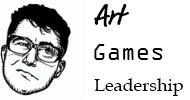

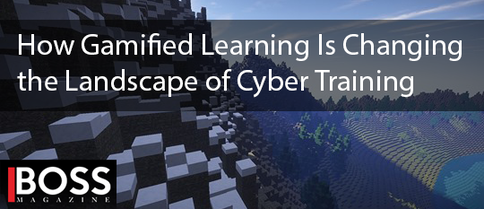









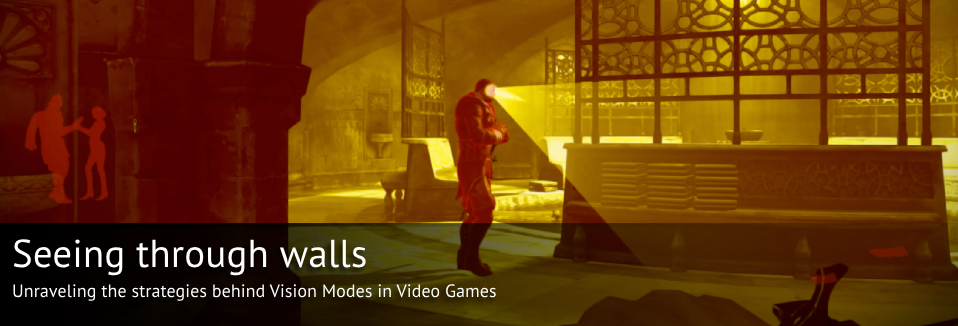
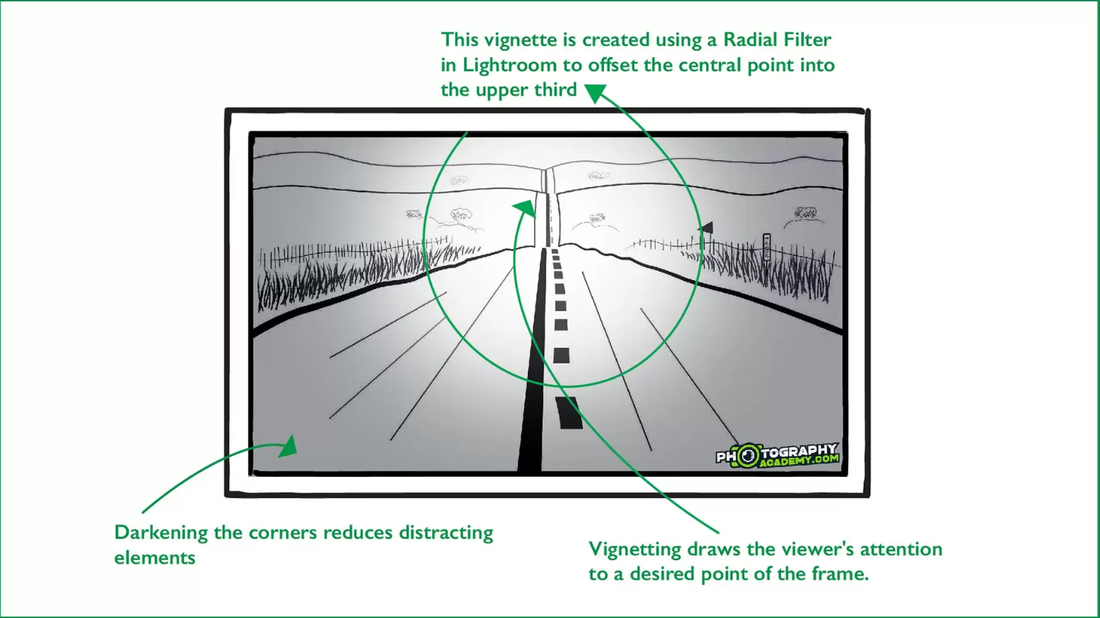
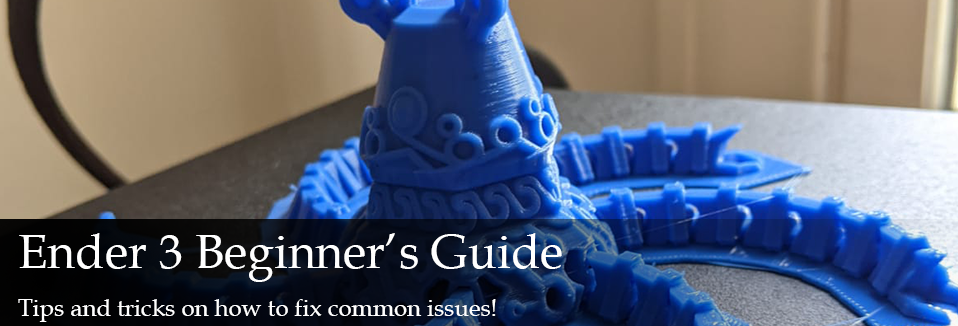

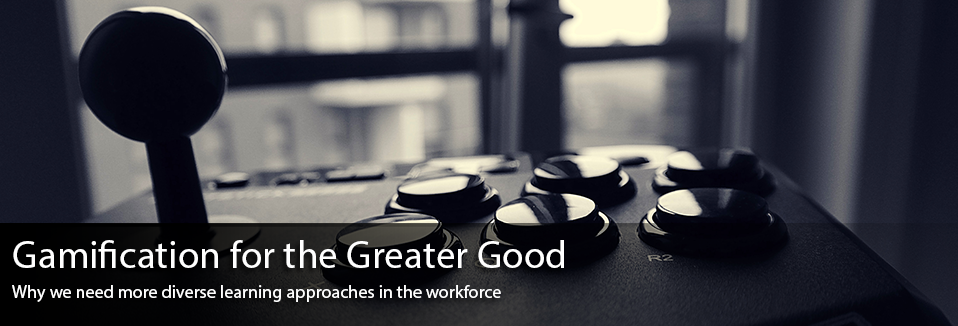
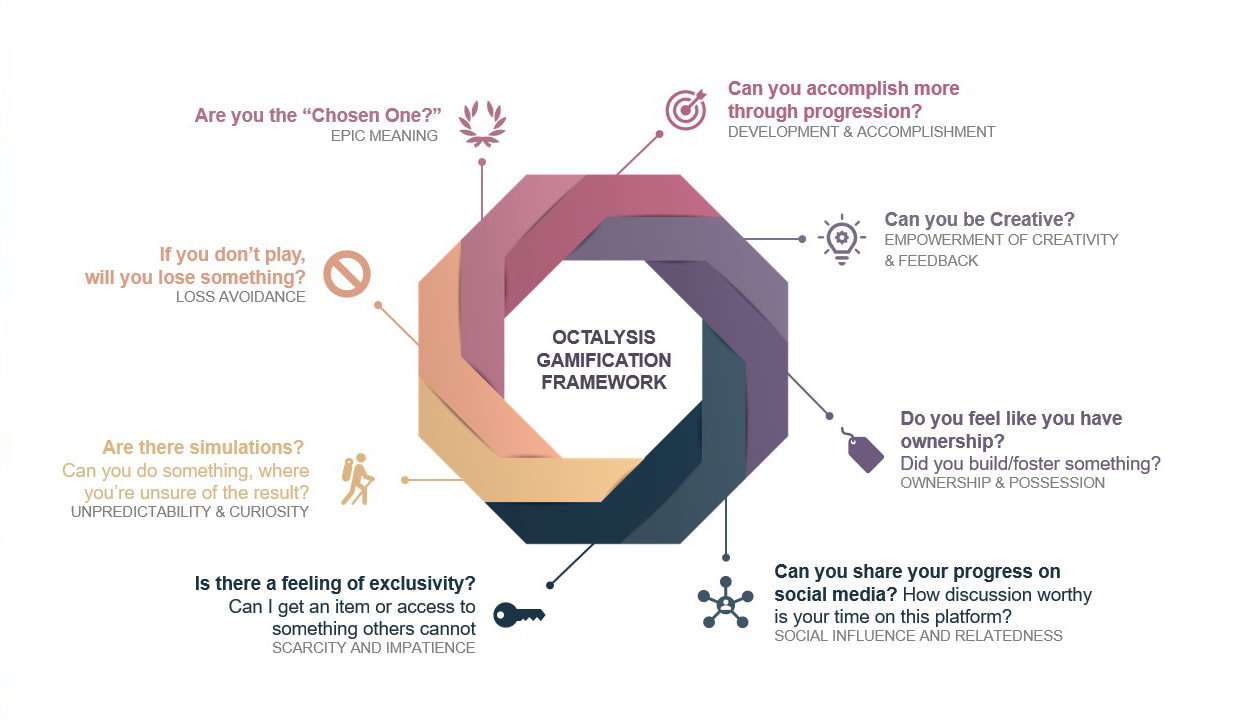
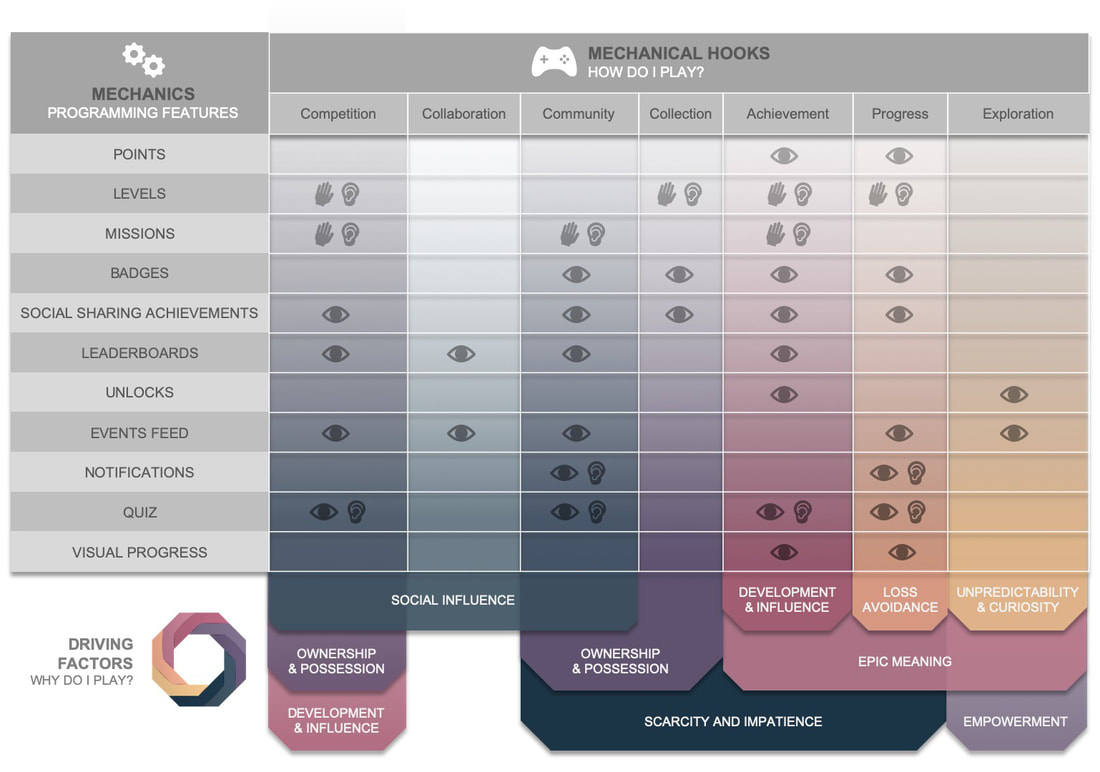
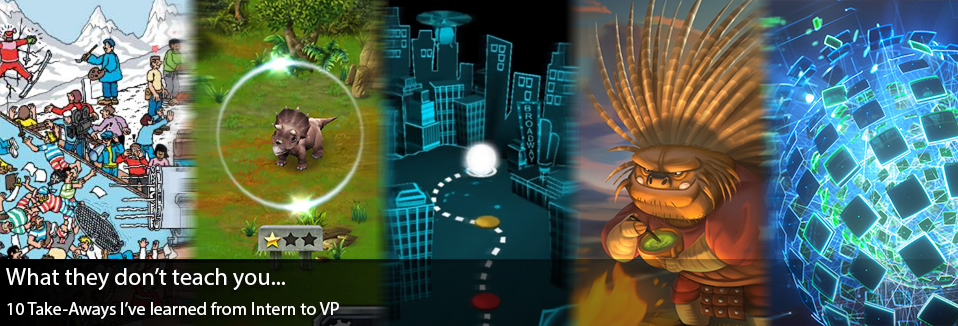

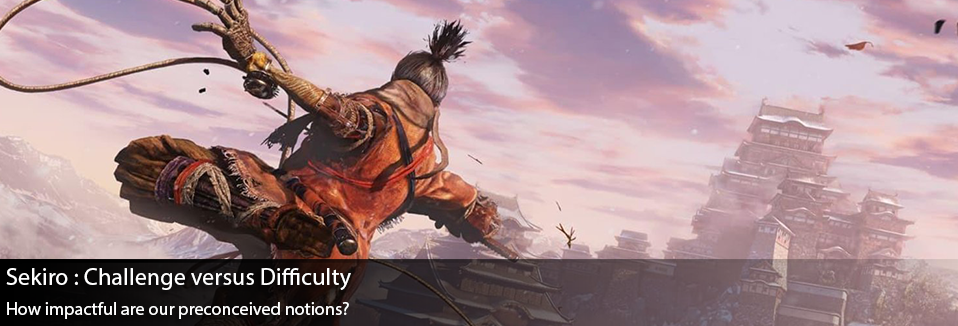
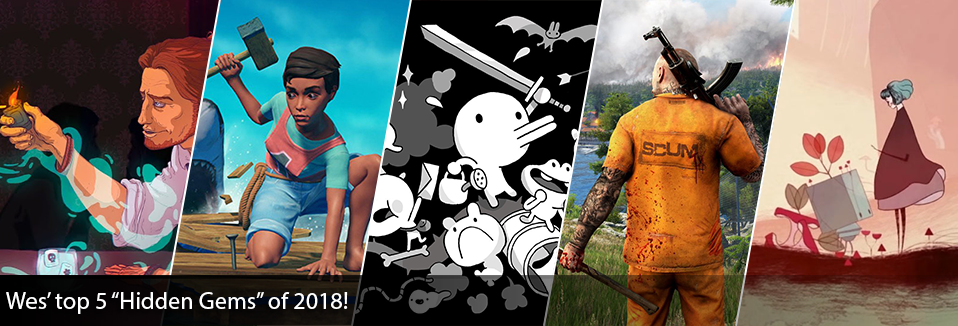
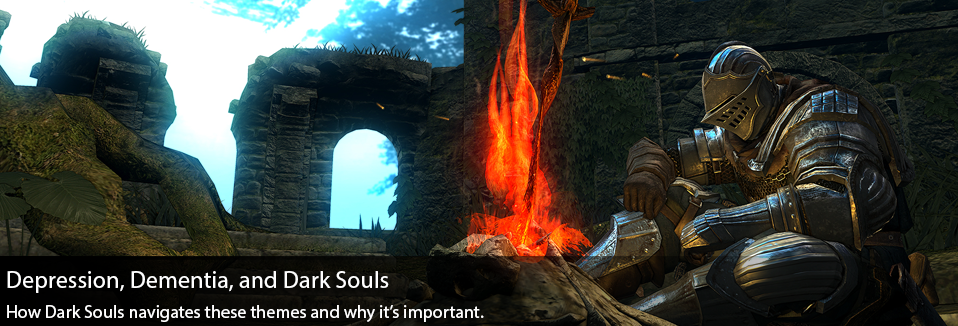
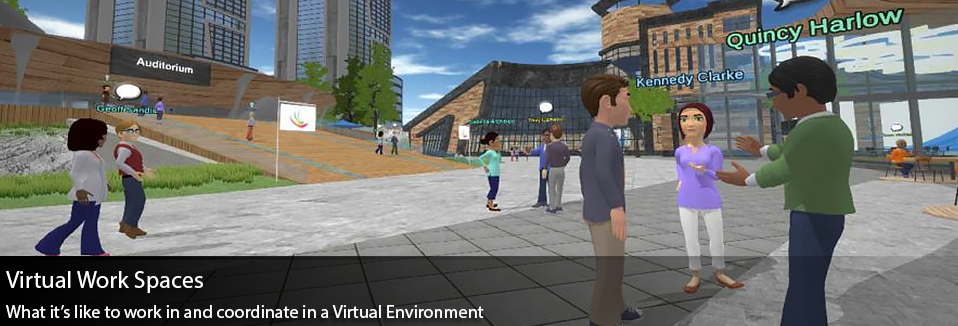

 RSS Feed
RSS Feed